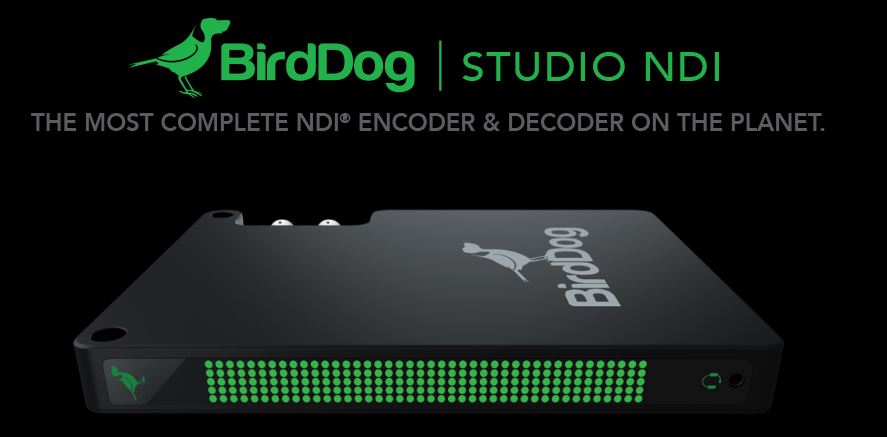NDI stands for Network Device Interface, it’s a software based AV over IP technology introduced by NewTek in 2015. NewTek was acquired by VizRT in April 2019.
The first device using NDI was the NewTek Tricaster, video production system. Because NDI is an open standard, third party products with NDI technology arrived pretty quickly. Some of the current NDI adopters are Sony, Avid, Panasonic, Adobe and BirdDog.

There are two flavors of NDI:
- NDI
The full high bitrate version of NDI using an I-Frame** only Codec. This Codec is presented as low latency and visually lossless. A 1080p60 stream is about 125Mbps*, a 4k60 350Mbps*. - NDI|HX
A high efficiency version of NDI based on the H.264 (AVC) Codec with a long GOP** structure. This results in a bitrate that’s about 1/10th of NDI’s bandwidth.
* NDI uses variable bitrates, so actual bitrates depend on the video content.
** I-frame are entirely individually encoded frames. In a Group of Pictures (GOP) there’s an I-frame but also frames that contain only the visual differences with the I-frame. Using GOP’s you get a low bitrate but more latency than I-Frame only.
Because the bitrates are relatively low, NDI can be used on a standard 1Gbps network. According to NewTek you can have the following number of streams on a 1Gbps Ethernet link:
- 1080p60: 7 streams
- 4k30: 3 streams
- 4k60: 2 streams
NDI streams are bidirectional and can include information like metadata, tally, intercom and camera controls (pan-tilt-zoom). There’s no encryption of the video streams.
Next page:
3. Connecting and Testing
Content:
1. Introduction
2. NDI Facts
3. Connecting and Testing
4. Video Quality
5. Switching
6. Latency
7. Multicast
8. Verdict